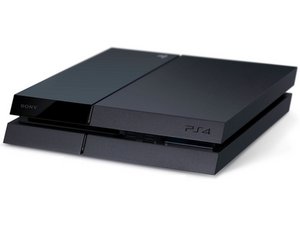What is the typical resistance of the capacitors behind the APU?
Hello!
I have a BLOD PS4 original(CUH-1206) that's causing damage to its power supply. I successfully repaired the power supply which I thought is the cause of the BLOD but when I re-assembled the whole thing, same thing happened. Still BLOD and the power supply is defective again. That's why I started to measure stuff within the motherboard.
Power supply issue: No 12V output even when 5Vsb is applied.
Motherboard issue: I cannot find anything wrong visually. I measured the resistance on one of the caps behind the APU and I'm getting around 10-ohms. The caps behind the RAM chips are around 30-ohms.
These measurements seem low. I'd expect 60-ohms or higher based on experience repairing other electronics. If you have a known good motherboard, can you tell me what resistance measurements are you getting?
Thank you!

Hi @fixmaxi
You can't test capacitors with an Ohmmeter as they do not pass DC current. The Ohmmeter will show that they're charging (due to the voltage from the Ohmmeter) and when fully charged this will register as a resistance value on the meter but it it not the resistance of the capacitor.
To measure a capacitor's ESR (equivalent series resistance) you need to pass an AC current though the capacitor. Capacitors will pass AC currents.
Also you cannot measure any component accurately i.e. resistor,inductor diode, capacitor etc if it is still connected in circuit as you don't know what other components may be connected around it that will affect the reading. You need to isolate at least one side of the component from the circuit and then measure it.
There are ESR meters available and some that will allow measurement to be done on capacitors "in situ".
由 jayeff 完成的
You can check for leakage on a older (analogic)ohm/v meter. Set the meter to ohm res. dc, open up ps4 turn board over. Use+/- terminals after capacitor discharge. It should sit at same lvl as a base good cap. If it drops steady, cap is bad.I used same method to fix xbox and identify leaky caps that where not bulged.
由 ediflorianUS 完成的
Hello @jayeff . Thank you for that detailed explanation. I understand what you are saying. Though I am not particularly concerned with the capacitors' parameters. I should have made myself clear. I apologize.
I was essentially measuring the resistance between VCC and GND of the APU since the capacitors behind it are parallel to it (DC filter caps) and that is what I am concerned about. Low resistance between VCC and GND usually means a defective component (may be burnt, shorted, or something in between) is present. This is under my assumption that ~10 ohms is considered low. That is why I'm asking for known good board resistance.
I am hoping I only have a bad capacitor somewhere and not the APU or a RAM chip :D
Cheers!
由 fixmaxi 完成的
@fixmaxi
If you suspect a capacitor is faulty or low resistance then perhaps one way is to disconnect a capacitor, one at a time and measure the resistance between VCC and Gnd to see if has changed.
If having removed/replaced all the suspect ones you find that nothing changed then the problem is not a capacitor.
In electronics fault finding not every fault exhibiting the same symptoms necessarily has to have the same cause and without a schematic (I couldn't find one) it is more difficult so you have to resort to time consuming methods to try and isolate where and what the problem is
由 jayeff 完成的
Thank you for your answers.
I'm avoiding time-consuming methods because you know...I'm lazy and lacking proper tools. I guess what I'm saying is if that 10ohms that I'm getting is normal, I'll move on to other components like the power controller.
I also have not tried powering up the motherboard using external power supply to check how fast or slow the caps would discharge.
I guess it'll have to wait until I've bought the tools I need. Anyway, if any of you folks have the time, please share the resistance measurement you have on your motherboard.
由 fixmaxi 完成的